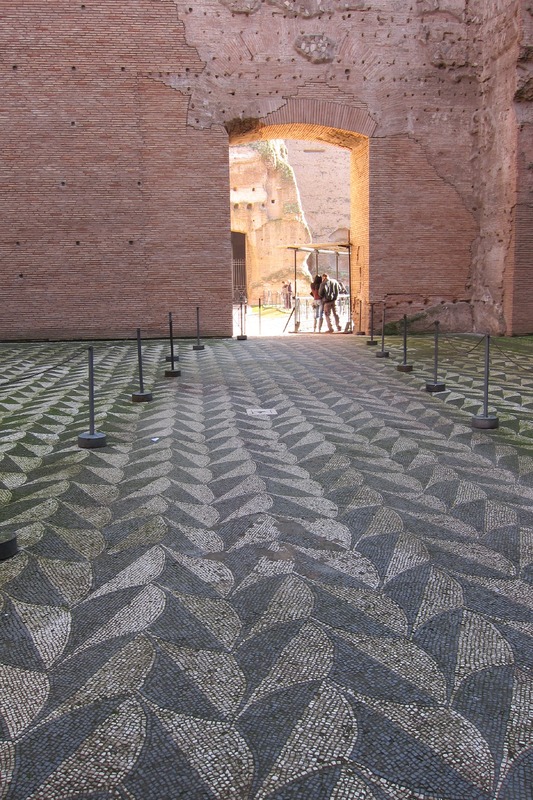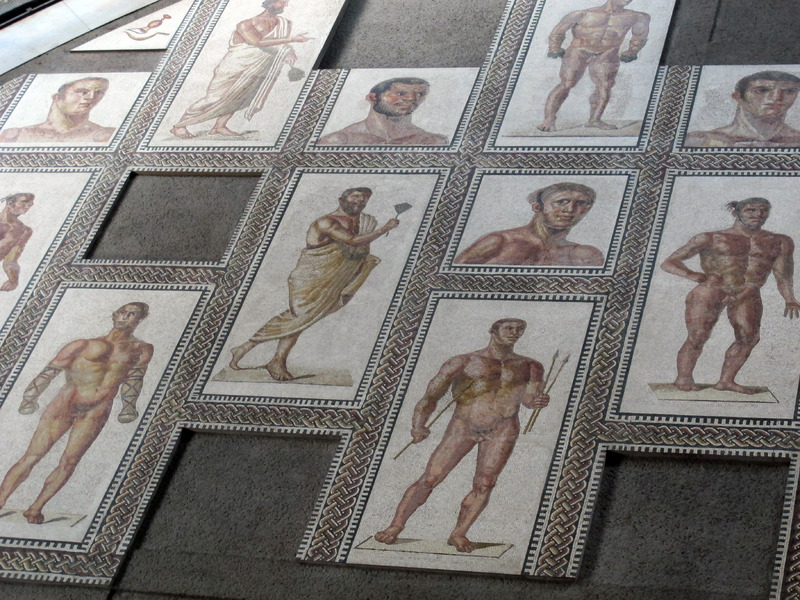Mosaics
Floor mosaics were among the lavish decorations of the Baths of Caracalla. They varied greatly, ranging anywhere from simple black and white patterns to more elaborate and colorful designs. Even today there are areas on the ground floor where the mosaics have been well preserved.
The most famous mosaics of the Baths of Caracalla were those of athletes located in the palaestrae, the columned exercise courtyards. These mosaics were discovered in 1824 and were later removed and used to decorate the Lateran Palace.1 They were altered to fit that space. In the 1960s, these mosaics were moved to the Vatican. They now consist of panels depicting athletes and things related to athletics/exercise, an appropriate theme for their location. It is possible that a few of the athletes in the mosaics were actual Roman athletes because a few have names inscribed in them.2
1Phyllis Williams Lehmann, "A Roman Source for Klee's Athlete's Head," The Art Bulletin 72, no. 4 (1990) 639.
2Phyllis Williams Lehmann, "A Roman Source for Klee's Athlete's Head," The Art Bulletin 72, no. 4 (1990) 640.

